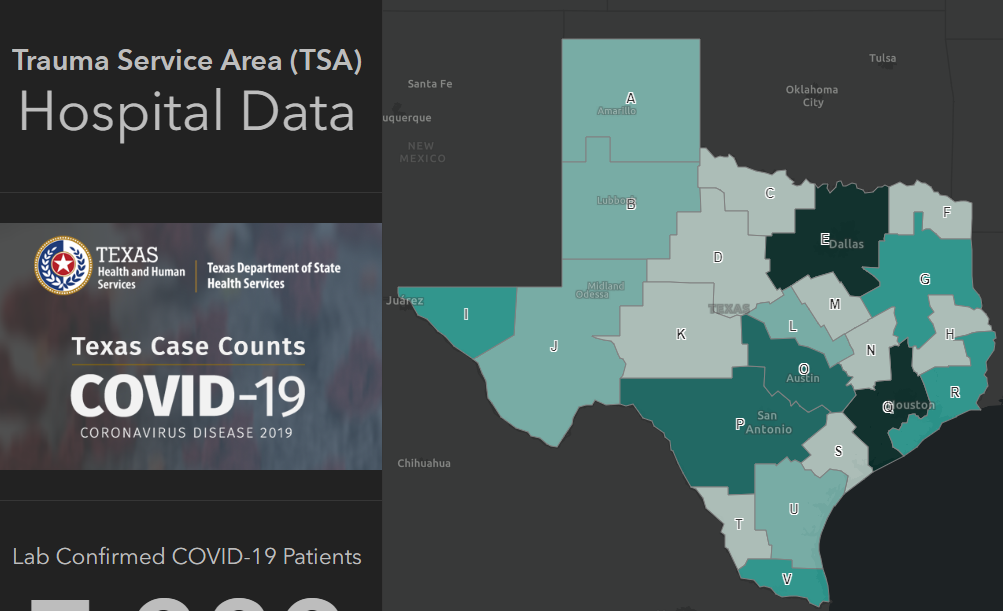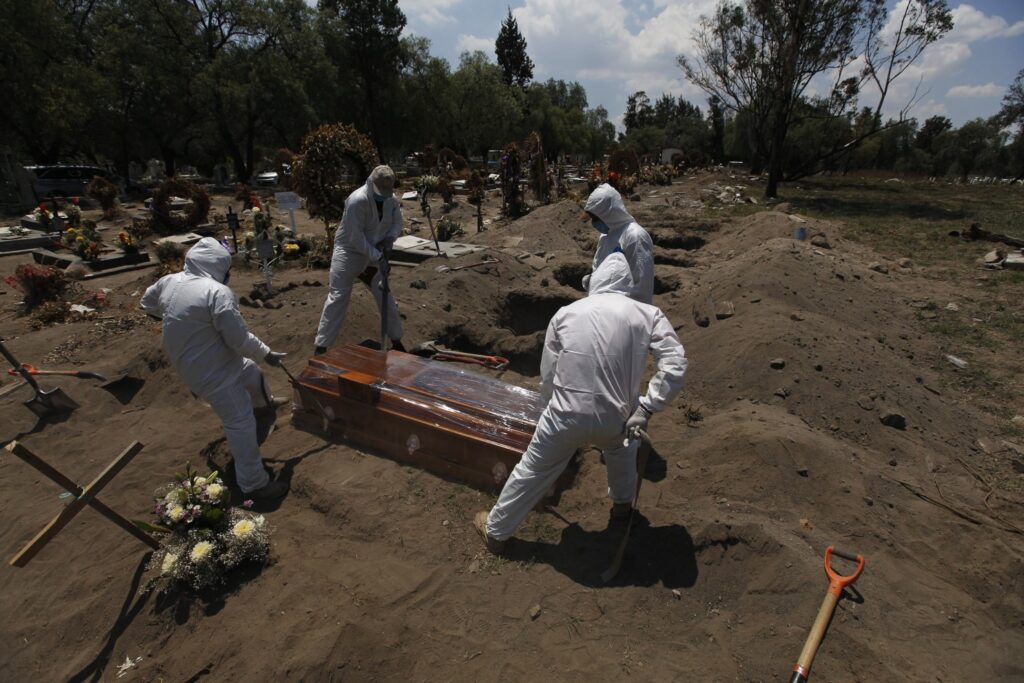
By Todd Bensman as originally published July 7, 2020 by the Center for Immigration Studies
AUSTIN, Texas – The narrative about the current State of Texas Covid-19 crisis goes like this: Fault for the escalating spike in hospitalizations that have overwhelmed care facilities falls squarely on Gov. Greg Abbott’s phased reopening and also the cavalier partying of bar patrons and Spring-break revelers.
But my Border Patrol sources, Mexican media reports, and hyper-local media reporting at the border now tell a Texas story at sharp variance with that simplistic tale. Taken all together, the collected reporting persuasively suggests that some percentage of the Texas Covid-19 hospitalizations, likely a significant one, comes from an ongoing influx of seriously ill patients legally and illegally fleeing Covid-exploding Mexico’s overrun health system. Refusal to acknowledge this ground truth and to excavate the data necessary to inform the right policy choices presents a danger to life that is more real than any imagined political slight given by stating Mexico is a source.
Strong Evidence: ‘hundreds’ of sick Border Patrol Agents and Much More
Enough evidence is now on hand to say definitively that severely ill patients are pouring over from Mexico and adding to the American counts of hospitalization and death. It’s probably coinciding with regular community spread resulting from recent mass protests. What’s needed now is acknowledgement that there are at least distinct streams merging into a river and should not be conflated.
This most convincing evidence emerged from national reporting back in May and early June, before widespread second-wave spikes generated the current panicked and uninformed policy responses. These arrived as reports, no longer cited, in The The New York Times, The Washington Post, The Wall Street Journal, and most recently, to its rare credit, CNN on June 29. These reports established a credible anecdotal baseline that Covid-19 patients have been flooding through California and Arizona border ports of entry from Mexico (some illegally too) – by the thousands – since at least mid-May as the virus struck our southern neighbor a month or two behind the U.S. The causal correlation was that Baja and Sonora state hospital systems were seizing up at the same time, in worst-case scenarios of overrun bed space and medical staff.

The CNN report confirmed other reports that American expatriates and Mexican visa-holders coming up to California ports of entry aboard ambulances, or calling ambulances as they were crossing on foot. The story, for instance, quoted Carmela Coyle, president and CEO of the California Hospital Association, calling what is underway as “an unprecedented surge across the border.” The same June 29 story quoted California’s emergency medical services authority head Dr. David Duncan describing “the steady stream” coming into Imperial County as “gas on the fire” that will “continue to escalate and fuel the Covid pressures that we see.”
None of these reports, however, mention the highly similar circumstances in Texas or the fact that Mexico’s Tamaulipas state hospitals right across from the Texas ones are seizing up too, in Matamoros across from Brownsville, in Reynosa across from McAllen, in Nuevo Laredo across from Laredo, and in Juarez across from El Paso.
On Friday, a Border Patrol agent who works the Rio Grande Valley in south Texas told me his leadership had informed agents that more than 350 of their ranks had been pulled off the line in just that sector and placed in quarantine, including 120 confirmed agent cases, because at least in part “the number of illegals we catch with positive Covid are increasing.” This tracked with what CBP Acting Commissioner Mark Morgan told a Senate homeland security committee hearing on June 25, that “several hundred” of his agents were infected with the virus due to “high-risk contact” with infected migrants they apprehended.
Meanwhile, with almost every hospital along the Texas border chronically full of Covid patients, medical leaders are transporting them to Houston, San Antonio, Dallas and probably to other cities now reporting that they too are filling up ICU beds, much like a helicopter airlift reported in California. After months of low and manageable numbers, according to the Texas Tribune, they are now transferring patients to facilities as far away as Dallas.
We know some patients are obviously coming over from Mexico, from reports about people such as this Nuevo Laredo, Mexico senior, Humberto Padilla, who died in a Laredo hospital bed.
No one in the Texas medical profession or media seems willing to ask or say where, exactly, the patients originated or even attempt to break things down, resulting in a very likely inaccurate picture of what is happening in Texas. It’s always characterized as entirely local internal spread resulting from opening the economy.
That only aggravates a dire public health problem.
Missing Data Vital to Revisiting Trump’s Border Closure and Policy Response
None of this is meant to discount that regular community spread is happening concurrently. But the reason why it is important for America and its leaders to know if Mexico imports are a major source of the virus is so they can counter the problem with the correct cocktail of policies. Formulating those requires a granularity of actual knowledge about any other source of a spread that appears to be eating up hospital capacity in border states like Texas at this very moment.
One policy that must be urgently re-considered based on granular data is whether the Trump Administration’s March 20 emergency border closure was sufficient and should be toughened to protect American hospital systems. By all accounts, that border closure only prohibits inbound pedestrian crossings by those traveling “for tourism purposes, such as sightseeing, recreation, gambling or attending cultural events;” Everyone else, including “individuals traveling for medical purposes (e.g., to receive medical treatment in the United States,) is free to cross at will with any one of a panoply of visas. The March 20 closure orders never prevented U.S. expatriate retirees, the highest-risk age demographic, from returning over the border.
As crucial for revising the emergency border “closure,” the knowledge is needed to properly inform the extent to which elected state and local leaders like Abbott and mayors in Texas cities really need to reinstitute lockdowns, especially if significant percentages of the cases turn out to be an imported problem that developed in Mexico under that country’s unique circumstances and public health responses. Not anything that American leaders did or didn’t do or over which they have any policy control.
The Uncomfortable Missing Data No One Seems to Want But Everyone Needs
The data that would most definitively inform these important policy considerations – and reporters pointing fingers at everything except the border right now – include care-facility admittance information showing patient place of birth, nationality, immigration status, city of residence; inter-hospital transfers within Texas; and Customs and Border Protection hospital transports (Border Patrol and Office of Field Operations at the ports of entry) from June 1 to present. All of this data resides with the admitting hospitals at the border and in the interior of the state and, for the CBP hospital transports, obviously with CBP.
But none has been made public, if it has been sought at all.
The absence of hard, irrefutable data leaves Gov. Abbott, local officials and the general public to assume that they and Spring-breakers did all of this spreading entirely within the local circumstances of Texas, while the Trump administration allows the continuation of an unrevised emergency border closure that was probably far too forgiving.
CIS readers should know that the Center for Immigration Studies is doing its part to obtain the data, with limited luck so far. We may stand entirely alone, though, even though we would surely invite company.
Despite intensive coverage of disturbingly similar crisis conditions for suddenly overwhelmed care facilities along the Texas-Mexico border, Texas media have entirely abdicated reporting on the Mexico origins of patients overloading border care facilities, or even referencing the earlier reports by fellow journalists at The Times, The Post, and the Wall Street Journal.
This journalistic lapse at such an urgent time of need for life-saving policy fixes, or the wrong fixes at the wrong time, is an unforgiveable, damaging public disservice.
Follow Todd Bensman on Twitter @BensmanTodd